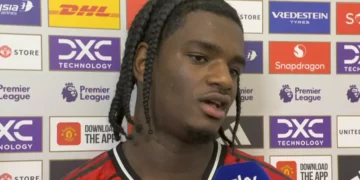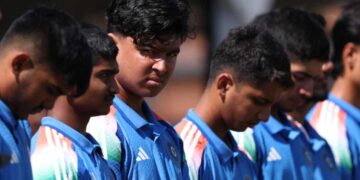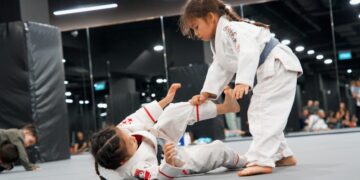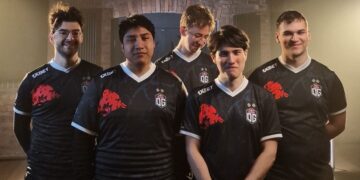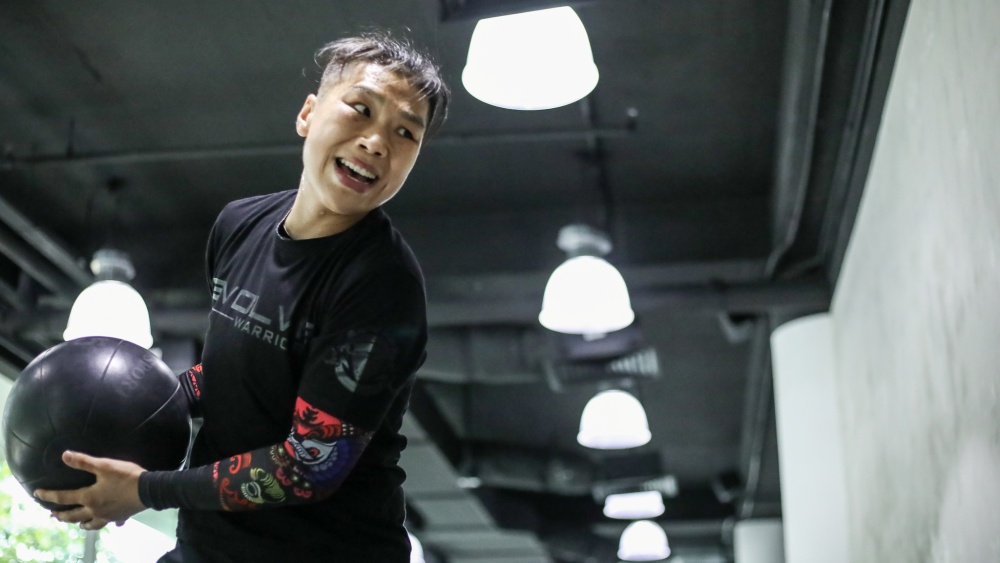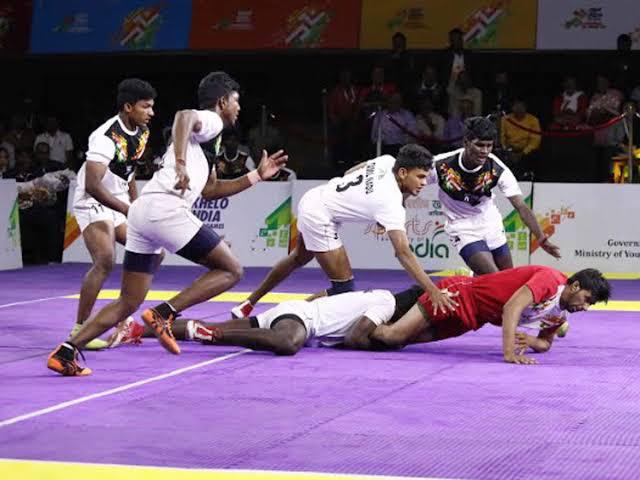In the world of martial arts, where power, agility, and precision are crucial, rotational exercises have emerged as a key component of an effective training regimen. These exercises, which involve rotating the body or parts of it around a central axis, are essential for martial artists looking to enhance their performance.
This article delves into the nature of rotational exercises, their benefits in martial arts, and how they can be incorporated into training.
Everything You Should Know About Rotational Exercises
Rotational exercises are movements that involve turning the torso and hips, engaging the core muscles. These movements mimic many martial arts techniques, such as punches, kicks, and throws, which require a significant amount of rotational force. The exercises range from simple bodyweight movements to complex routines involving equipment like medicine balls or resistance bands.
Examples of rotational exercises include Russian twists, medicine ball slams, cable woodchoppers, and rotational push-ups. These exercises target multiple muscle groups, especially the core muscles, including the obliques, rectus abdominis, and the muscles of the lower back.
Many martial artists make these exercises a major part of their training routines to improve the rotational force they can generate on the mat. These exercises primarily target the core muscles which are engaged during virtually all athletic movements.
The Significance Of Core Strength In Martial Arts
The core is often called the body’s powerhouse because it is the central link connecting the upper and lower body. In martial arts, a strong core is essential for several reasons:
- Power Generation: Most movements in martial arts, from punches to kicks, originate from the core. A strong core allows for greater force generation. Striking martial arts like boxing and Muay Thai teach students to generate additional power by rotating their torso whenever they throw a strike.
- Balance And Stability: Core strength helps maintain balance during complex movements that are involved when executing many martial arts techniques. A strong core also improves the ability of the top half and bottom half of your body to work as one.
- Injury Prevention: A robust core supports the spine, reducing the risk of injuries that can occur during high-impact movements.
Benefits Of Rotational Exercises For Martial Artists
Some of the benefits martial artists derive from rotational exercises include:
- Improved Power And Speed: These exercises enhance the ability to generate force rapidly, crucial for strikes and throws.
- Enhanced Coordination And Agility: Rotational movements require a high degree of body awareness and coordination, translating to better performance in the dojo or ring.
- Increased Flexibility And Range Of Motion: Regular rotational training improves flexibility, especially in the torso, hips, and shoulders, allowing for a more extensive range of motion in martial arts techniques.
- Better Endurance: Rotational exercises can increase muscular endurance, enabling martial artists to maintain high performance for longer periods.
- Injury Prevention: By strengthening core muscles and improving overall stability, rotational exercises can help prevent injuries.
Incorporating Rotational Exercises into Martial Arts Training
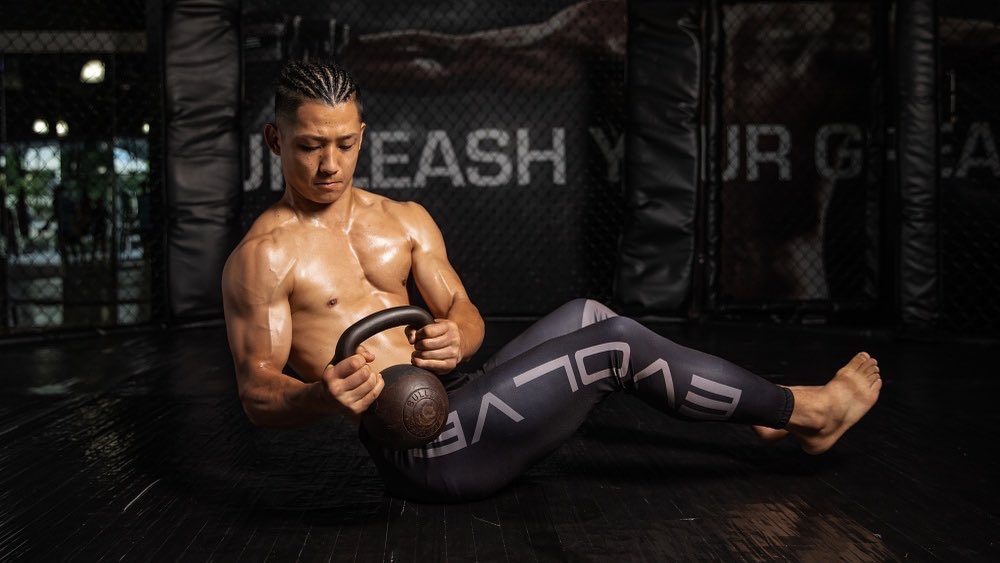
Kickboxing World Champion Hiroki Akimoto integrates a diverse range of functional movements into his routine to enhance his conditioning.
Martial artists should integrate rotational exercises into their regular training routines to maximize their benefits. Some of the things you should keep in mind when selecting rotational exercises to add to your workout routine include:
- Start With The Basics: Begin with simple exercises like Russian twists or medicine ball rotations to build foundational strength.
- Progress To More Complex Movements: Incorporate more challenging exercises like cable woodchoppers or rotational kettlebell moves as your rotational strength and endurance improve.
- Mimic Martial Arts Movements: Choose exercises that closely resemble specific martial arts techniques for more sport-specific benefits.
- Focus On Form And Technique: Proper form is crucial to prevent injury and maximize the effectiveness of each exercise.
- Include A Mix Of Speeds: Perform exercises at different speeds to improve both power and control.
- Use Equipment Wisely: Incorporate tools like medicine balls, resistance bands, and cables to add resistance and variety to workouts.
Sample Rotational Exercise Routine For Martial Artists
Here’s a sample routine that compliments your martial arts training:
- Russian Twists: Sit on the ground, lean back at a 45-degree angle, lift your feet off the ground, and twist your torso from side to side. This can be done with or without weights.
- Medicine Ball Slams: Hold a medicine ball with both hands, lift it above your head, and then forcefully slam it down to the ground, following through with your body.
- Cable Woodchoppers: Set a cable machine to the highest setting, grasp the handle with both hands, and in a sweeping motion, pull the cable diagonally across your body.
- Rotational Push-Ups: Perform a push-up and as you rise, rotate your body and extend one arm upwards. Perform another push-up and extend your other hand upward this time around to complete a rep.
- Standing Band Rotations: Anchor a resistance band at chest level and, standing sideways to the anchor, rotate your torso away, keeping your arms straight.
Customizing The Routine
Martial artists should customize their rotational exercise routine based on their specific martial art style, fitness level, and training goals. A judoka, for example, might focus on exercises that enhance throwing power, while a boxer might prioritize exercises that improve punching speed and power.
While rotational exercises are crucial for the development of your core, they should be part of a balanced training program that includes cardio, strength training, flexibility exercises, and martial arts-specific drills.
A Strong Core Is The Foundation Of All Martial Arts Movements
Rotational exercises are a valuable addition to the training regimen of any martial artist. By improving core strength, power, coordination, and flexibility, these exercises can significantly enhance martial arts performance. It doesn’t matter if you train in striking or grappling-based martial arts. Having a stronger core will translate into improved performance in most martial arts.
As with any training program, it’s essential to approach rotational exercises with proper form, balance in your workout routine, and an understanding of your personal fitness goals and needs. With the right approach, rotational exercises can be a game-changer in a martial artist’s journey towards mastery.
You may also like:
Martial Arts Training On An Empty Stomach
Martial arts is a physically demanding discipline that requires strength, endurance, flexibility, and coordination. It’s not just about throwing punches or executing high kicks; it’s about moving your body in a way that maximises power,…
Many people don’t perform enough hamstring workouts since the quads are typically the main focus of leg workouts. Not to say that’s a bad thing since your quads are the biggest, most powerful muscles in…
In the world of boxing, a solid and agile upper body is essential for delivering powerful punches and defending against opponents. To achieve peak performance in the ring, boxers must focus on cultivating upper body…
Jiu-Jitsu is one of the most popular martial arts today as anyone, regardless of age, gender or background can practice it safely. Unlike most other martial arts, every training session includes sparring rounds where your…
Big, defined shoulder muscles improve your functional strength, posture, and physical appearance. You don’t even have to take off your shirt or wear athletic gear all day to show off your rock-solid shoulder muscles. It’s…
Planks are one of the best bodyweight exercises to strengthen and build your core, including your abs. These exercises also help to strengthen muscles in your back, particularly your lower back. Planks involve keeping your…
Muay Thai is a sport that has grown exponentially over the past few years. The increase in social media exposure from Thailand’s largest stadiums as well as global promotions such as ONE Championship, Muay Thai…
In the heart of a bustling metropolis like Singapore, companies are progressively acknowledging the integral role of employee wellness in a thriving workplace. This transformation is palpable as companies are taking various innovative measures to…
Brazilian Jiu-Jitsu is widely viewed to be one of the most effective martial arts in the world, and it comes with a rich history and culture. It’s a grappling-based martial art that was developed by…
Boxing is perhaps the purest form of combat known to man. Nothing could be simpler than duking it out with nothing but the hands. Despite its inherent simplicity, there are several different styles and tactics…
The martial arts of Muay Thai and Lethwei are deeply ingrained into the history and national identity of the neighbouring countries, Thailand and Myanmar (formerly Burma) respectively. The fact that these countries share a border…
There are a myriad of fighting styles in boxing, from the evasive Philly Shell style Floyd Mayweather uses to the aggressive Peekaboo style of Mike Tyson. Regardless of their individual style, skilled boxers share one…


